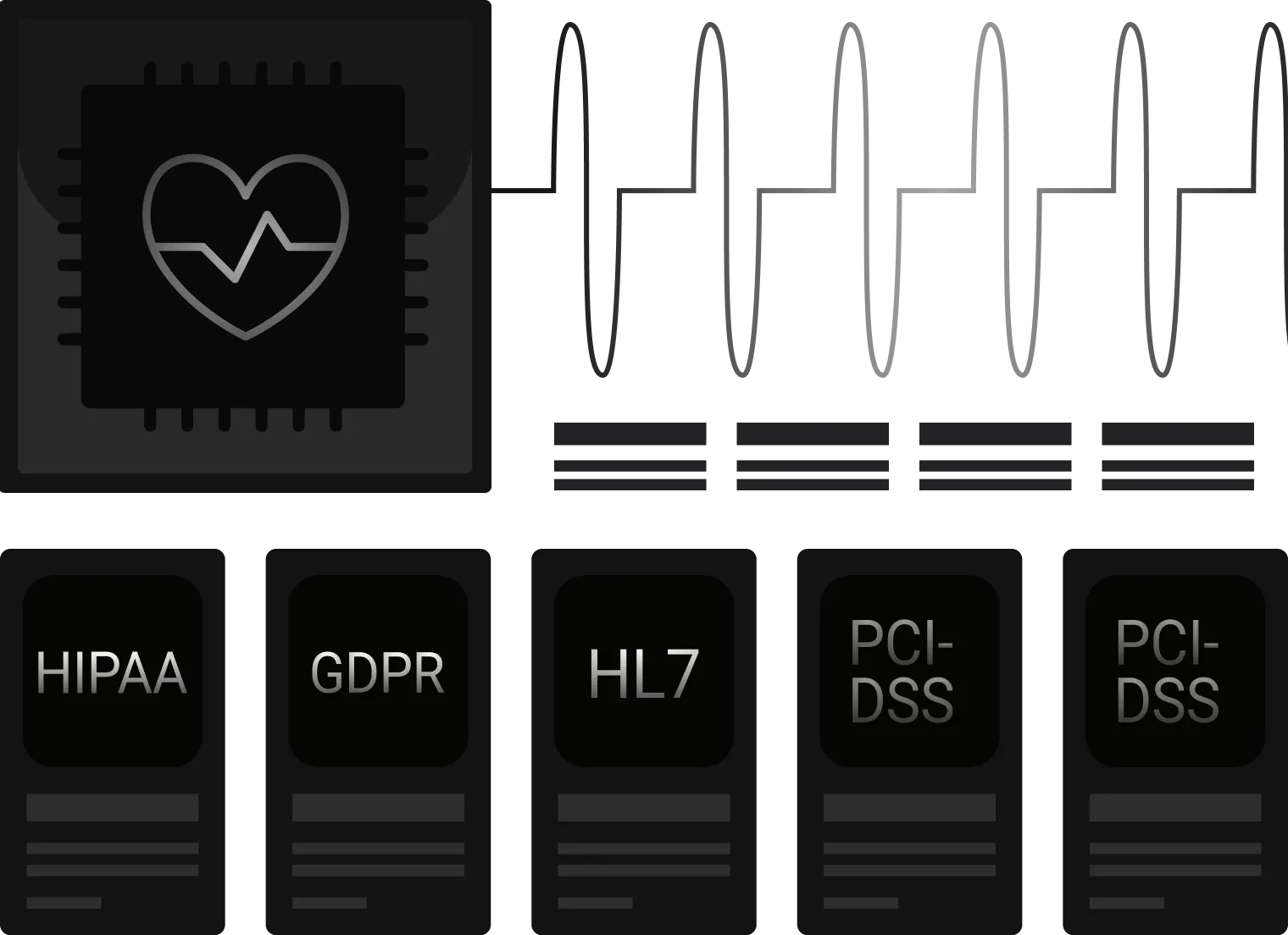Healthcare Software Development
Take your business to the next level with our 17-year experience in healthcare software development. CodeIT creates digital solutions that perfectly match our client’s business needs.

Business First
Code Next
Let’s talk
- Patient management systems
- Electronic health records
- E-prescription
- Accessibility-compliant telemedicine platforms
- Online bill payments
- Appointment scheduling
- Computer vision
- Laboratory information management systems
- Document creation and delivery tools
Perfect fit for custom development needs
Looking for a system with a set of critical features to empower your healthcare organization? We know how to build and integrate crucial functionality.
Patient management
This software handles routine tasks. Doctors can use it to organize appointments, prescriptions, patient records, and billing.
Electronic health record (EHR)
EHRs store patient data securely in one spot, reducing paperwork and bureaucracy.
E-prescription
E-prescribing allows healthcare facilities to issue prescriptions electronically and send them securely to pharmacies or medicine dispensing units.
WebRTC — telemedicine
Using live text and video chats through VoIP, patients can consult with doctors online.
Online bill payment
With this healthcare software, patients can check and pay their bills easily online.
Appointment scheduling
This feature lets patients choose a doctor, view their availability, and select a suitable time slot.
Computer vision
AI tools help doctors look at medical pictures, like X-rays and MRIs. They can spot health issues and suggest the right treatments.
LIMS
Laboratory Information Management Systems (LIMS) provide tools to automate lab tasks and reduce errors. They also aid in better decision-making and ensure regulatory compliance.
Documents creation and delivery
Hospital management systems allow doctors and staff to auto-generate documents. These can then be sent to patients using services like the Fedex API or other delivery options.
Security and privacy standards
Comply with key industry regulations and ensure the highest levels of security and privacy with CodeIT.
Industry leaders—powered by our expertise
Discover how our healthcare software development company empowers businesses with cutting-edge custom solutions, driving advancements in patient care.
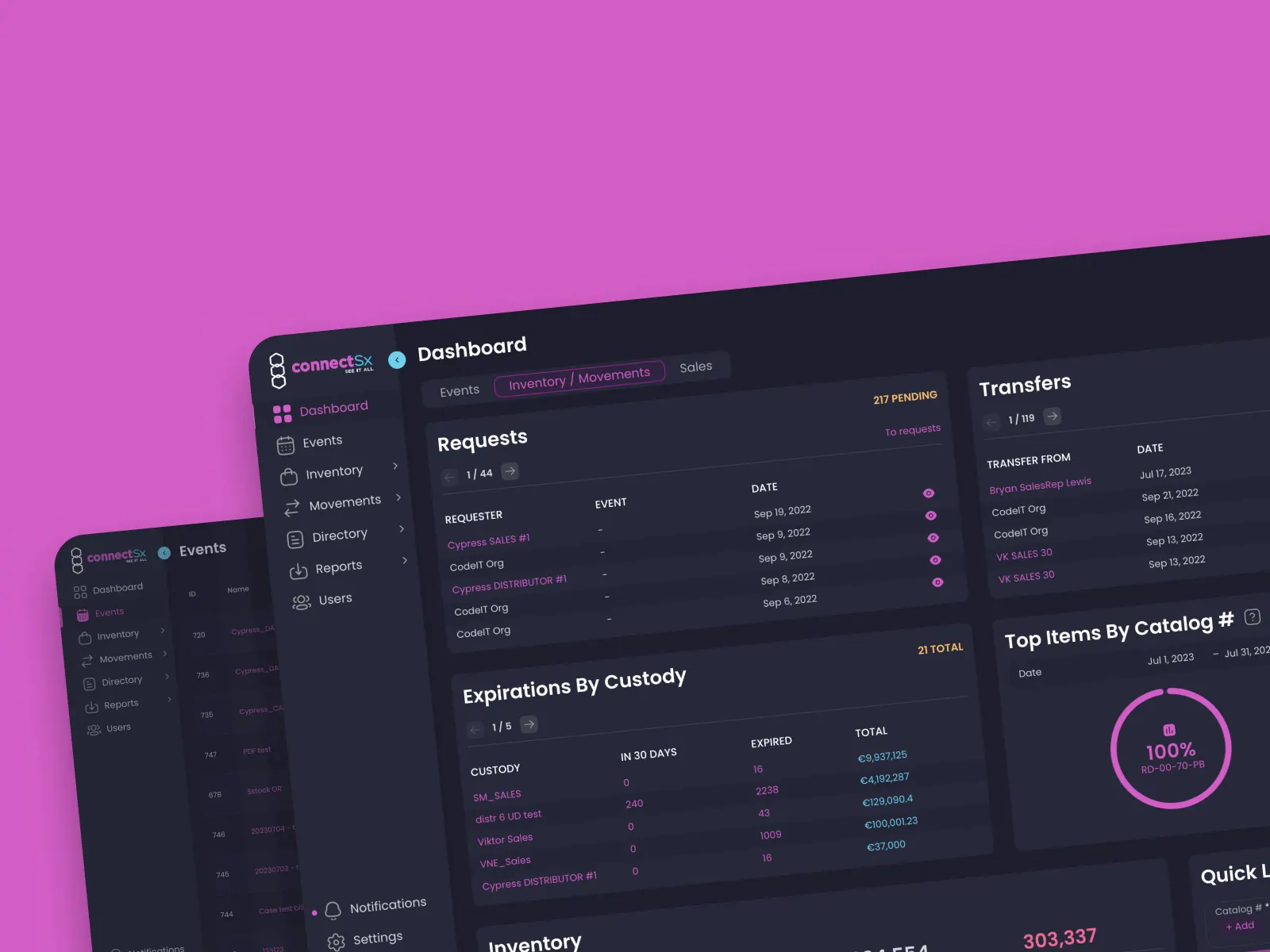
ConnectSx
The solution enables inventory visibility and streamlines operations.
- Inventory management web app
- Inventory management mobile app
- UDI scanning mobile app
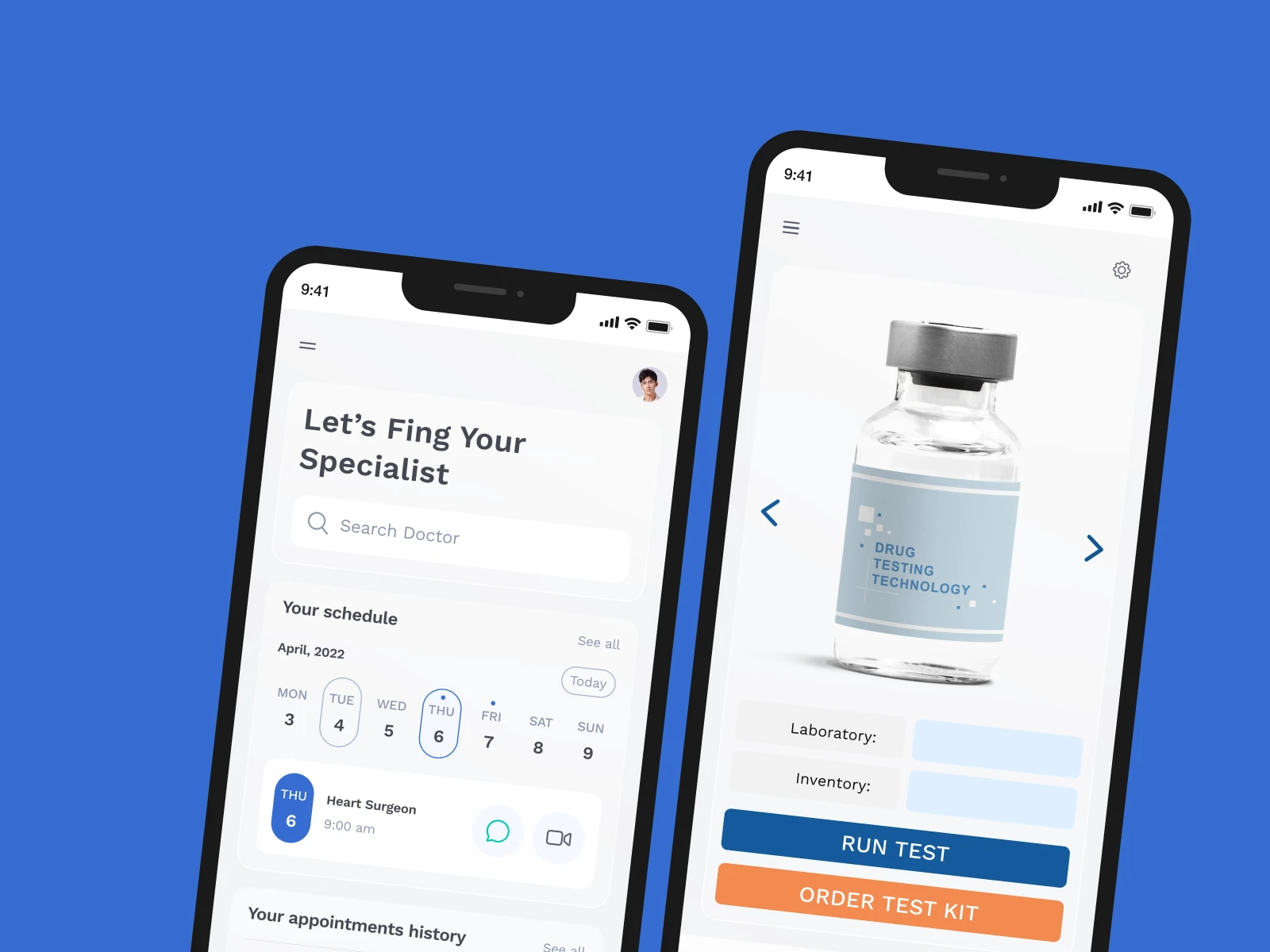
Solution for online medical laboratory
The mobile app streamlines lab analysis and documentation creation.
- Automated sample submission
- Results storage and sharing
- Integration with leading labs
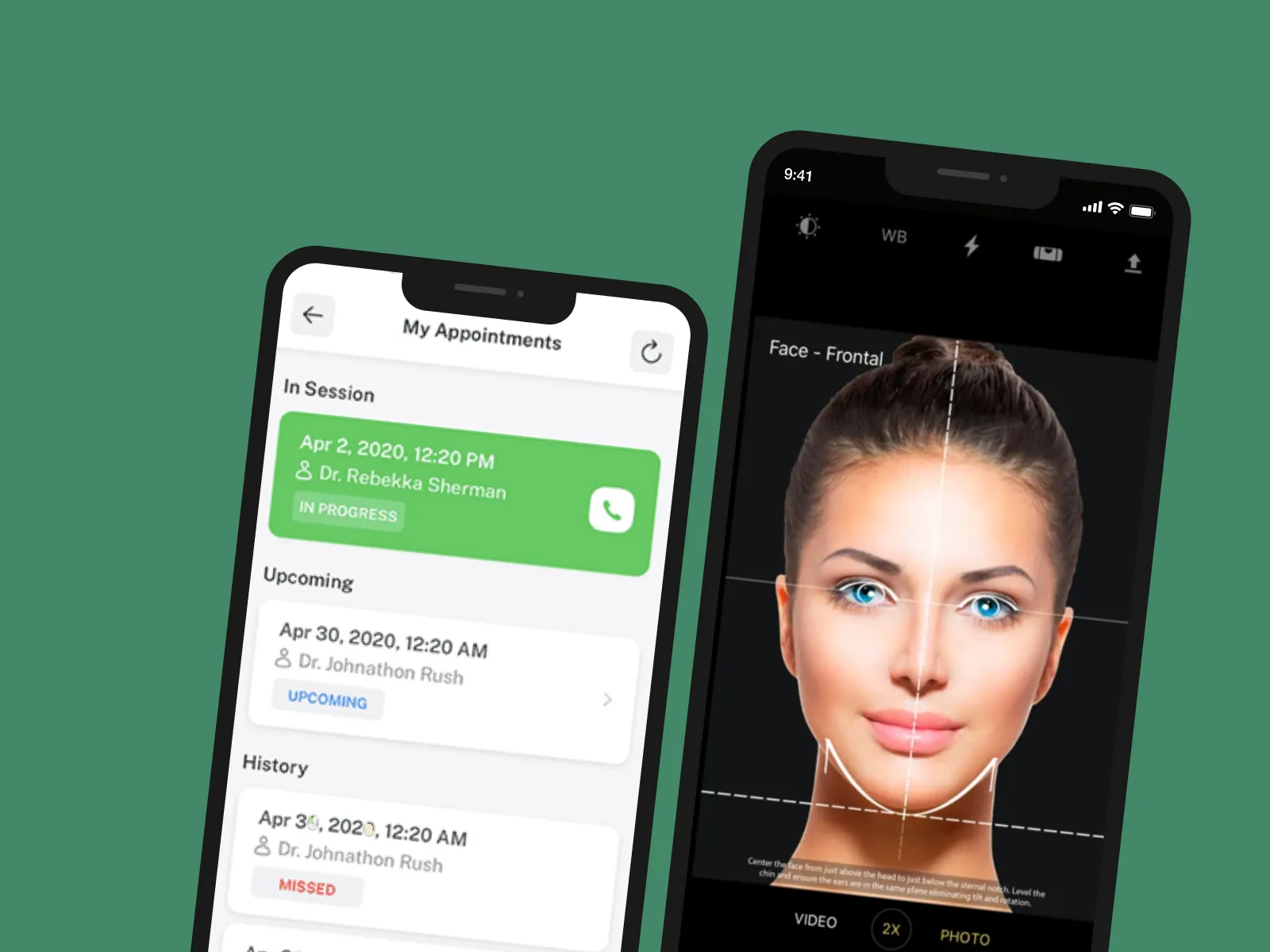
RxPhoto
This solution helps compare, track, and analyze treatment outcomes.
- High-quality clinical photography
- Auto-adjusting photo positioning
- Cloud-based HIPAA-compliant storage

Software for medical laboratory equipment
The web app helps improve performance and reduce the number of errors.
- Experiment planning
- Lab analysis integration
- Test result management
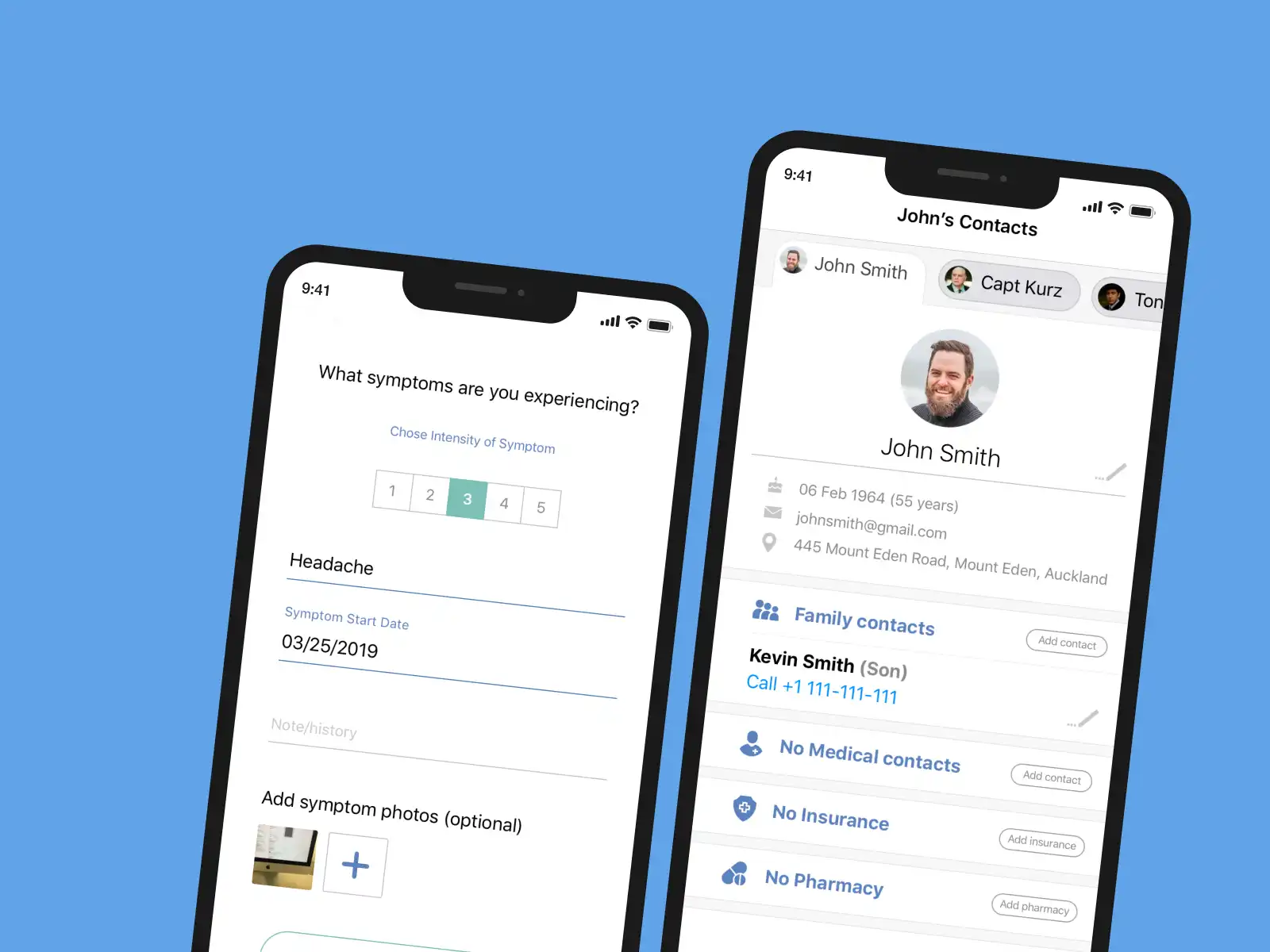
HealthSync
Medical information management app
- Medication management
- Symptom tracking
- Appointments creation

Teletherapy
The telehealth app helps children with autism receive care remotely.
- Online patient-therapist communication
- Customized therapy sessions
- Cross-platform compatibility

AnytimeCaring
The peer-to-peer platform helps caregivers connect with the aged community.
- Real-time messaging
- Calendar with appointment scheduling
- Integrated payment system
Need a custom system for your healthcare organization?

Business First
Code Next
Let’s talk
Healthcare software development services
Hire a team has outstanding expertise in developing custom digital solutions. We are experts in the following areas:
Get expert guidance tailored to your unique needs. Maximize efficiency and make well-informed decisions that improve care delivery and compliance.
Our custom hospital software development company will help you create the best-matching solution by analyzing requirements and business challenges to offer actionable insights.
Transform your outdated software into a high-performing and future-proof system that grows with your business needs. Solve existing technical challenges and eliminate bottlenecks with our healthtech software development expertise.
We can enhance performance, security, and user experience, ensuring your healthcare software remains efficient and reliable over time.
Create innovative, user-friendly solutions that are tailored to your organization. Get bespoke, secure software that meets your unique needs, improving patient experience and operational effectiveness.
The CodeIT team comprises a large team of specialists with hands-on expertise in building healthcare solutions from top to bottom.
Seamlessly integrate your healthcare systems with other tools such as EMRs, EHRs, and third-party applications to create a unified, efficient workflow.
Our tech specialists help achieve a fully connected ecosystem that reduces manual work, enhances data accessibility, and streamlines operations across departments.
Adherence to latest trends
Achieve #1 in the healthcare industry by following the latest technology trends when building digital products.
Cloud
Moving to the cloud lets clinics stop storing patient data on-site. This saves on setup and upkeep costs and makes data more secure.
Generative AI
Using generative artificial intelligence (AI), we develop applications that can help examine medical data to perform predictive analysis to enhance the quality of medical services.
Big data
We create digital solutions for healthcare that handle vast amounts of data. This aids in deeper market research and provides data-driven suggestions.
Internet of medical things (IoMT)
We develop software for devices that gather and share health data. This includes tracking medical tools and real-time health monitoring.
Mobile health
CodeIT excels at making mobile apps for all platforms to enhance the mobile health experience. This includes booking appointments, telehealth, health tracking, and more.
AR/VR
AR and VR improve medical services. They’re used for training medical staff, visualizing veins or surgeries, and relaxing patients.
Generative AI for Healthcare
Transform healthcare services, personalize treatment plans, and enhance diagnostics by integrating AI-driven tools.
Translate questions submitted in natural language into SQL queries to retrieve the necessary data from a database and analyze patient data.
Example: A system instantly provides information about the average blood pressure of a patient.
Improve interactions between patients and clinicians by facilitating dynamic, natural language conversations about healthcare information.
Example: A patient utilizes a healthcare chatbot to manage their chronic condition.
Automate responses to inquiries from patients or providers by utilizing medical knowledge databases.
Example: A chatbot responds to questions regarding symptoms or treatment options.
Summarize lengthy medical records or research articles to quickly grasp new information.
Example: A system offers brief summaries of patient histories or clinical trial outcomes.
Retrieve patient records, clinical guidelines, or medical research articles by asking a chatbot to find and provide certain documents.
Example: Doctors can access relevant clinical studies to support their treatment decisions.
Integrate multiple data sources via APIs, making healthcare applications deliver real-time insights and personalized recommendations based on combined patient data.
Example: An e-health solution fetches clinical data from 3rd-party systems to make informed decisions.
Leverage comprehensive medical knowledge bases to deliver precise and pertinent information to clinicians and patients.
Example: An AI system supports doctors in diagnosing patients and developing treatment plans.
Improve the comprehension of medical texts by connecting entities to relevant knowledge bases.
Example: An agent helps clinicians interpret patient notes and generate insights.
Implement AI in your workflows?

Business First
Code Next
Let’s talk
Share of patients who prefer healthcare providers with online booking options
68%
Average cost-reduction achieved through e-health solutions
25%
Share of millennials who like health sessions more than face-to-face visits
74%
Steps from your idea to launch
We don’t tap into product development right away—we think business first. Check out our solution-oriented custom healthcare software development flow in more detail.
Business requirements collection and analysis
We gather and thoroughly analyze your business requirements, understanding your organization’s workflow, user needs, and specific challenges.
Client:
- Sign a non-disclosure agreement (NDA)
- Share product vision, business goals, and technical requirements
CodeIT:
- Estimate time and deadlines
- Analyze competitors and conduct market research

Project planning
The planning phase involves resource allocation, task prioritization, and risk assessment to ensure the project runs smoothly and stays on schedule.
CodeIT:
- Prepare wireframes for data visualization
- Create a product mockup
- Select a technology stack
- Define roles and responsibilities
- Offer the final proposal
Client:
- Accept the final proposal or share suggestions
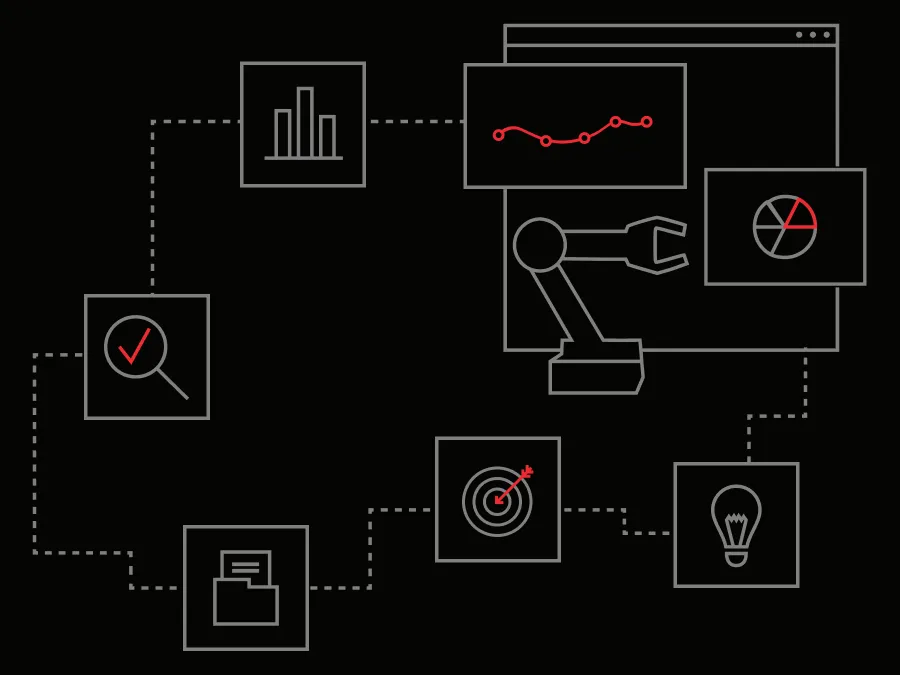
Development environment configuration
We configure secure, scalable environments that support continuous integration and deployment (CI/CD). Also, we set up all tools and technologies for seamless solution development.
CodeIT:
- Establish a secure data-sharing workspace
- Analyze requirements
- Form a backlog
- Configure development environment
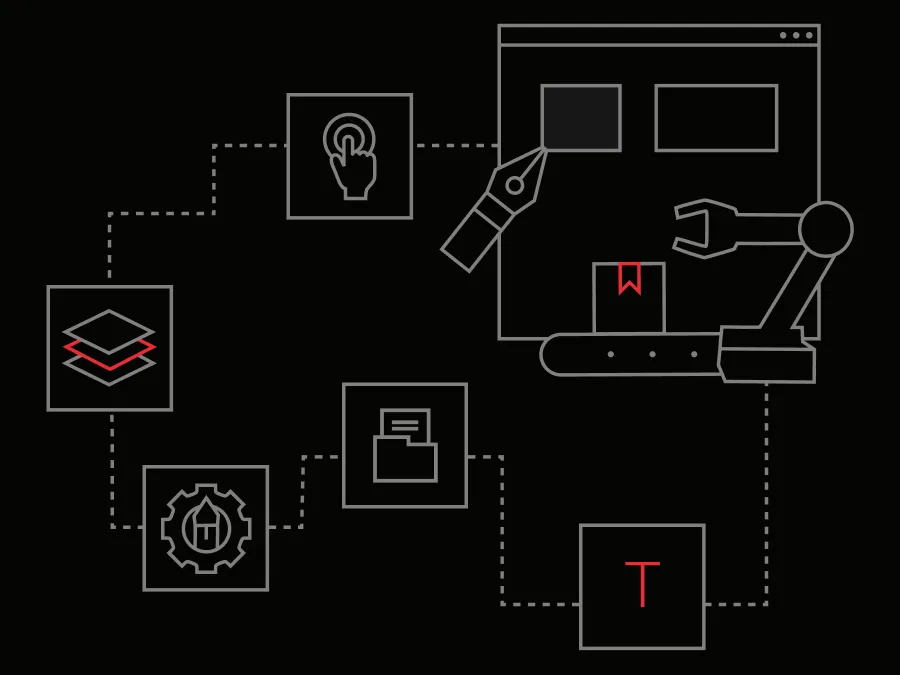
Iterative product development process
Using an agile methodology, we develop your software incrementally, delivering functional modules in each sprint. It helps ensure flexibility to collect feedback and process changes.
CodeIT:
- Develop a product’s design
- Create sprint backlog
- Integrate DevOps practices
- Perform iterative healthcare custom software development
- Run unit testing
- Review code
Client:
- Receive progress reports
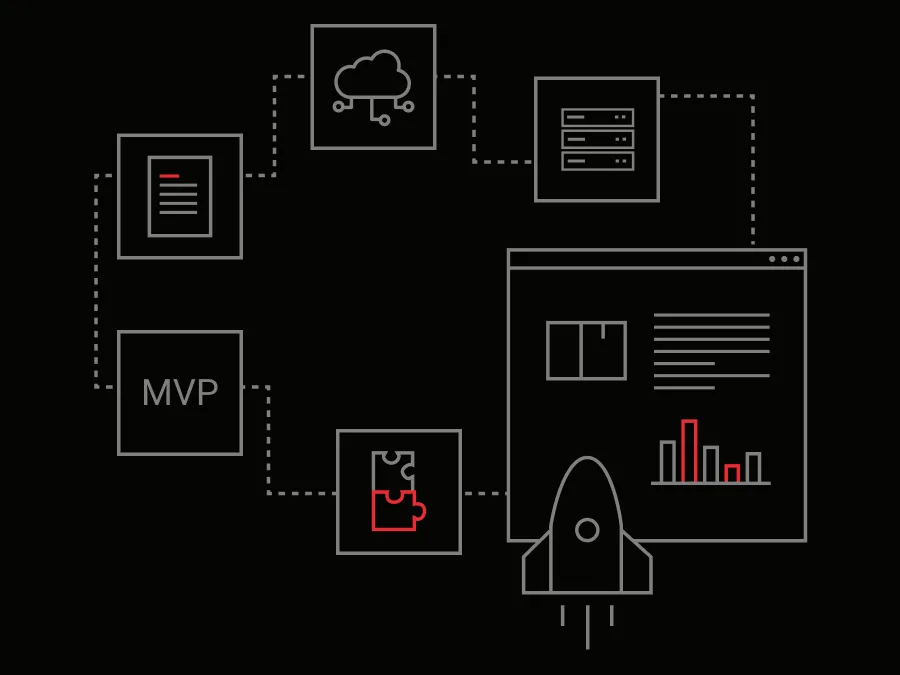
Quality assurance
The quality assurance process includes functionality testing, performance optimization, and user acceptance testing.
CodeIT:
- Test the load, UI/UX, security, performance, data flow, and integrity
- Conduct acceptance testing of increments developed
Client:
- Conduct acceptance testing of features developed
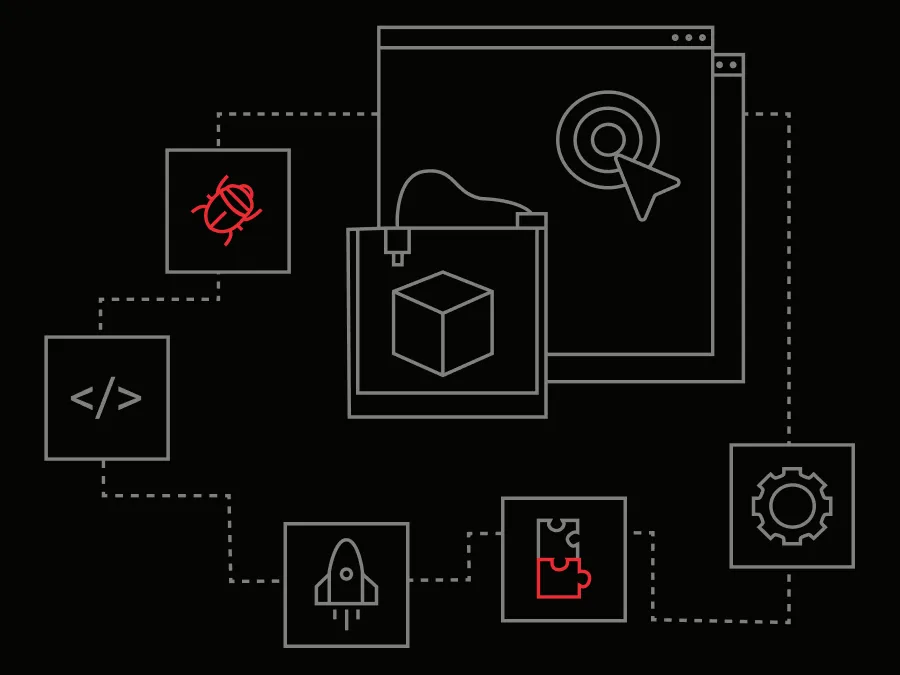
Deployment and maintenance
We configure the required infrastructure and handle the deployment process, ensuring minimal disruption to your operations.
CodeIT:
- Maintain the software developed upon request
- Set up infrastructure for a product’s release
- Deploy a product to the live environment
- Set up monitoring tools
- Prepare technical documentation

FAQ
Our custom healthcare software development company has a tried-and-tested workflow that helps us create new products of excellent quality. The development process implies the following stages:
- 1. Business requirements collection and analysis
- 2. Project planning
- 3. Development environment configuration
- 4. Iterative product development
- 5. Quality assurance
- 6. Deployment and maintenance
Our healthcare software developers build comprehensive digital solutions for:
- Hospitals and private medical practitioners
- Pharmaceutical companies and stores
- Patient-centric startups
- Laboratories
- Medical device manufacturers
Yes. We genuinely believe that only custom development will help achieve tangible results in the industry. The existing ready-made solutions may not fully meet business requirements and not bring value to users.
Compliance with the regulator’s rules is obligatory if your software deals with any Protected Health Information (PHI). In such a case, we follow all the guidelines to develop HIPAA-compliant products when providing healthcare software development.
